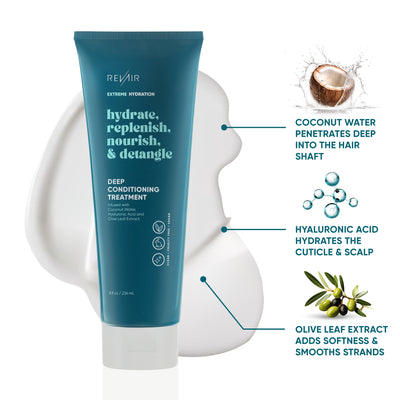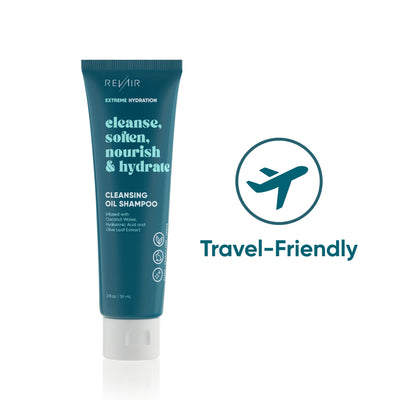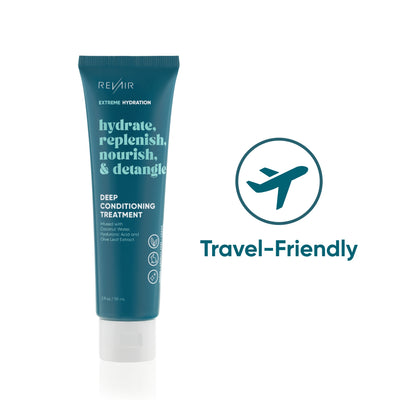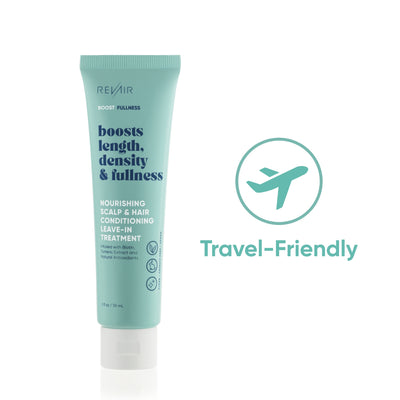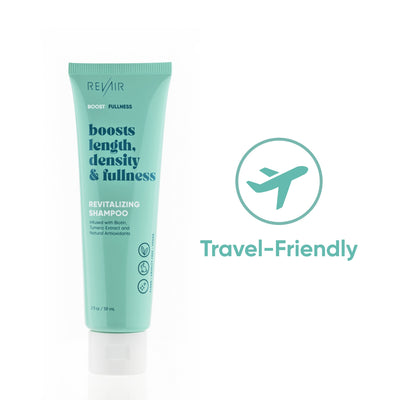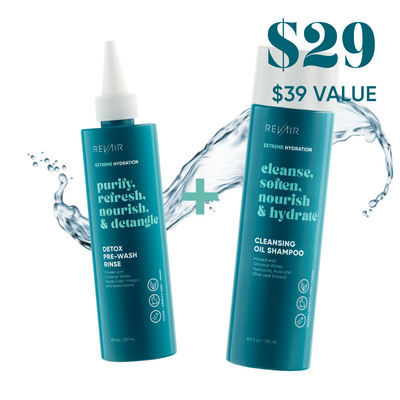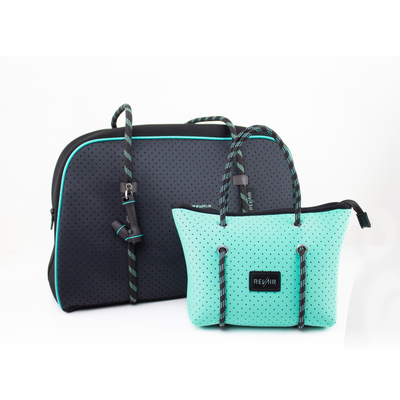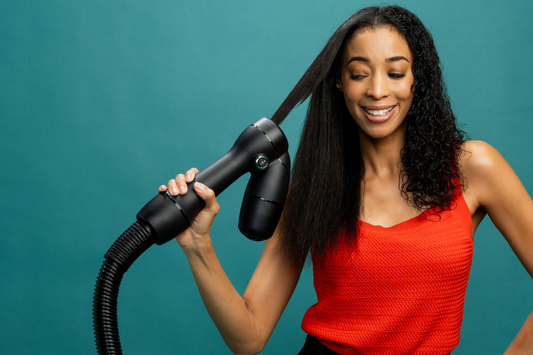
9 Hair Care Tips for the Winter
Winter weather can be very harsh on all hair types. Your hair needs protection from the cold to remain soft and healthy. It’s important to defend your tresses from breezy air, damaging winds, static electricity, and even indoor heaters.
Cold weather outside combined with dry indoor heating can wreak havoc on your strands and result in breakage.
How drastic your hair redemption methods need to be during the winter depends on where you live.
If you live somewhere with pretty defined seasons — where summers are hot and dry, and winter is full of snow and rain — you may have noticed changes in your hair at different times of the year.
If you live in an area where it’s mild all year long, keep reading for tips to keep handy if you visit somewhere that's known for its rainy days, frosty winds, or high amount of snowfall, in which case you'll definitely need to treat your hair right!
1. Wear a hat

It is important to cover your hair during the winter months to shield it from the moisture-robbing dry air, snow, wind, and rain. This is not the time to worry about dreaded hat hair. The elements dry your hair out, making it more prone to breakage. Wool, cotton, and other fabrics can cause breakage as well, so make sure to line your hat with silk or satin to help prevent damage.
Fight static electricity under your hat by using a smoothing and shine-enhancing spray - like Bright Spot Shine Spray, a detangling and moisture-rich spray which can be applied to wet or dry hair to add some softness back into the ends.
Try going DIY. Buy or use old fabric (such as a scarf or silk blouse) to measure and sew into any hat you already own that may be made with hair-damaging materials.
We recommend curly and coily girls apply a hair primer prior to wearing a hat, or utilize a silk scarf to prolong their blowout.
Place your blowout or style inside a silk scarf underneath your hat to protect your hair. When you arrive at your destination, remove the scarf and your beautiful style will still be intact and gorgeous!
Another little known fact is that friction caused by collars on jackets can lead also lead to frizzy, broken hair. Make sure to keep your hair on the outside of your collar to decrease friction.
2. Detangle your strands
Make sure you brush through your hair if it's long to keep it detangled. It can be tempting to simply throw your hair up into a top knot or ponytail every day, especially if you plan on wearing a hat or scarf anyway! However, keep in mind that leaving these knots in your hair will only cause them to become matted over time and cause some serious breakage when you’re ready to brush it out.
A tip to ensure you’re not leaving your locks too long between detangling: carry a comb or brush in your bag, especially on days where you’re wearing hats and scarves.
3. Dry your hair before going outside

Always make sure your hair is completely dry before going out into the cold. Anything that is cold expands, and that is what can happen with your wet hair shaft in the cold weather. This puts you at risk for breakage and can also contribute to hair color fading faster!
Keep in mind that your hair is in its most vulnerable state when it's wet, and if you get little icicles forming on the wet ends of your hair, you are just adding weight - which can cause breakage.
4. Try to shampoo less
If you’re someone who washes their hair every day regularly, it is time to switch things up. Over-washing your hair will strip it of natural oils that help to keep hair moisturized and protected. This is especially bad in the winter when those oils are needed more than ever! Consider not shampooing as often, and switching to a more moisturizing shampoo and conditioner than your summer go-to.
Try extending the time between your washes as much as possible. If you typically wash your hair every day, then switch to every other day. If you find your hair is still very dry, try every three days.
Those with oily hair might find their hair goes extraordinarily limp, particularly when it comes to the dreaded “hat hair,” which can ruin your holiday mood. Invest in a good dry shampoo in the wintertime and use that in-between washes and on days when you’re hair is a little flat to soak up oil and breathe some life back into your locks.
Pro Tip: Even though a hot and steamy shower might be just what you’re looking for when the temperature is chilly, extremely hot water can zap moisture from your hair making it brittle and more vulnerable to breaking. Wash your hair with lukewarm water and follow with a cool rinse instead.
5. Keep up with the trims

While your hair may be bundled up more often than not in the cold winter months, trims are still a necessity! It’s always a good idea to get a trim at the start of the season, to remove any damage and freshen up your cut. If you’re trying to grow out your hair, dusting off those split ends regularly is effective as well.
We recommend every six to eight weeks for your trim schedule. It’s very important to keep the ends of your hair trimmed as it helps with the overall health of the hair and keeps dry, brittle, broken split ends at bay.
6. Moisturize your hair well to avoid static
It’s likely you’ve experienced the frustration of static-y hair during the winter. Floating, fine strands are a common occurrence in colder climates. Instead of the static guard/dryer sheet method, prevent static induced ends by making sure your hair is hydrated with regular conditioning, a weekly deep-conditioning treatment, and a daily leave-in product that locks in moisture and fights frizz and static.
7. Use A Humidifier
The most common hair damage that can occur in the winter is actually caused by ourselves! Using the heater in your home warms you up, but it also dries all of the moisture out of the air, leaving it a dry environment that encourages brittle ends. To help reduce dry hair and skin caused by heating during the winter, use a humidifier.
Professional hairstylist Tyler Colton says this will help add moisture back into the air. “The other bonus is it also helps to reduce static electricity that can cause fussy, fly away hair.” Using a humidifier can help to rehydrate the air, keeping your locks looking lustrous.
8. Go back to your brunette roots.

It might be a good time to dial down blonde ambition during the winter. Icy blonde hair is awesome, but the upkeep and process for blonde locks is incredibly damaging for your hair.
Try leaving the roots a little darker and applying a demi-permanent hue until the weather is kinder. That way, it washes out after 1-2 months, and the process won’t be that detrimental to your blonding routine when you’re ready to go back to platinum or lighter strands again.
9. Protect your hair!
Blow drying, flat ironing, curling, excessive heating indoors...all of these can expose your hair to tons of heat damage. Air-drying is the healthiest way to dry your strands. If you are going to use heat, be sure to use a good heat protector, like leave-in conditioners and hair primers, to prevent breakage. Also try protective styles, such as braids, buns, twists, and ponytails, which gives your hair a break from the heat styling routine.
Short on time? Try taking your shower in the evening so your tresses can dry naturally overnight. Embrace your gorgeous natural hair and air-dry whenever possible.
It is recommended to avoid blow-drying and brushing your hair when it is soaking wet because that is when it’s at its most delicate. Detangle with a wide-toothed comb, and wrap your hair with a cotton T-shirt or microfiber hair towel and towel dry your strands to avoid causing breakage on your wet strands.
For the days when you want to style with heat and need to dry your hair fully before running out the door using a gentler option like the RevAir Reverse Air Dryer. The RevAir utilizes low heat and non-damaging tension to pull the water out of your hair and smooth the cuticle, leaving it dry and smooth with minimal heat exposure and damage.
Have any questions about how RevAir can help you? Feel free to reach out to our team and share. We love to chat!
